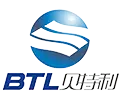High Electrical Conductivity:
Types of conductive inks are formulated with materials that exhibit high electrical conductivity,
allowing them to efficiently carry electrical currents.
Versatility in Substrates:
Like the silicone ink, the flexible conductive ink offers versatility by adhering to a variety of substrates, including paper, plastic, textiles, and even unconventional surfaces, providing flexibility in application.
Printability:
Conductive inks are designed for easy printing processes, enabling the creation of intricate electronic circuits through techniques like screen printing, inkjet printing, and flexography.
Durability and Stability:
Formulated to withstand environmental conditions, the stretchable conductive ink exhibit durability and stability, ensuring the longevity and reliability of printed electronic components.
Flexibility and Stretchability:
Some formulations of types of conductive inks are engineered to be flexible and stretchable, making them suitable for applications in wearable electronics and flexible electronics.
Low-Temperature Curing:
Many conductive inks can cure at low temperatures, enabling compatibility with heat-sensitive substrates like plastics and paper.
Conformal Coating:
The UV curable conductive ink can be applied as conformal coatings, allowing them to seamlessly cover irregularly shaped surfaces and provide a uniform conductive layer.
Customizable Formulations:
Conductive ink suppliers can customize the formulations of conductive inks to meet specific application requirements, such as adjusting viscosity, conductivity, and drying properties.


